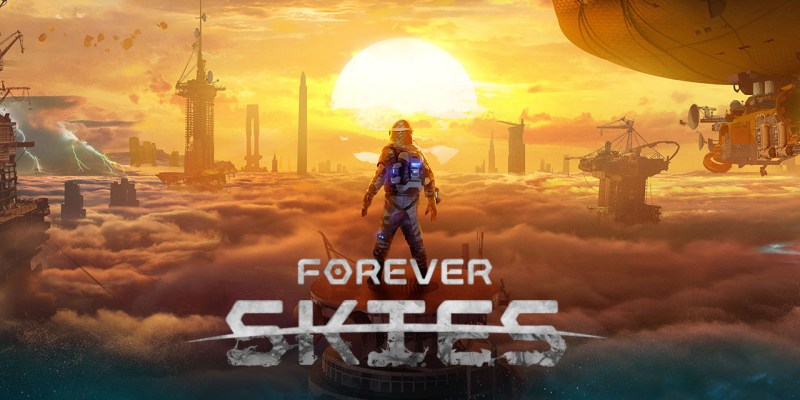Polish indie studio Far From Home knows first impressions are important, so it isn’t wasting the opportunity it has with its debut video game, Forever Skies. This first-person, post-apocalyptic survival adventure takes place on an Earth ravaged by environmental disasters, with the player character’s only refuge being a technologically advanced airship. While it draws inspiration from other survival games, such as Subnautica and Green Hell, Far From Home is using its team’s vast background in AAA development to create the sub-genre’s next benchmark entry. We caught up with Far From Home creative director Tomasz Wlazlo to talk about Forever Skies, how it will feel on PlayStation 5 and Xbox Series X | S, Steam Early Access support, and so much more.
The Escapist: Who are you and what is your role on Forever Skies? How long has the idea for this game been in the works?
Tomasz Wlazlo: I am very glad to be able to introduce our game in this interview. I’m Tomasz Wlazlo, creative director at Far From Home. Our studio has been working on Forever Skies, previously referred to as Project Oxygen, for more than two years. The concept of the game is the result of three thoughts: experience, survival, and air quality.
First of all, a part of our team had worked on AAA games such as Dying Light and Dying Light 2. Naturally, we wanted to stay in the whereabouts. Secondly, our recent but true love has been survival games, such as Subnautica, Raft, or Green Hell to name a few. And we always wanted to take the creative part once mastering several such games.
This has been bridged by the concept inspired by something bigger than gaming: the ongoing decline of the environment around the globe. With this in mind, we thought to give a player freedom of movement in a world after a terminal environmental disaster, so they can experience the consequences by themselves.
Can you explain Forever Skies’ core gameplay loop?
Tomasz Wlazlo: Before the actual gameplay starts, you must know that the player is arriving on Earth from its orbit where a group of descendants of survivors of the catastrophe are still alive, but not faring too well. Your mission is to come back with a cure for a mysterious disease, and the way to find it is the core of the game.
To make any progress after landing, you’ll basically need to take care of all your needs to simply survive. Obviously, you need to eat and drink and take care of your health, as coming from quite a sterile space you’re vulnerable to pathogens which have vastly evolved since there were any medical doctors walking the Earth. As a result, our gamers may easily get sick and need to recover while monitoring their health. Sorting this will require some serious exploration and then scientific research to either find or invent medicines.
Then, once you’ve taken care of your body, you will need to take care of your airship. This zeppelin is your home base. At first, it’s rather modest, so you’ll need to gather resources and expand the ship to better serve your growing needs. It will also get damaged as you’ll fly through stormy weather, debris, or simply collisions with the environment, and as a result, it will require repairs. But that’s not all, as base-building makes an important part of the gameplay. You will be able to customize the airship to make it uniquely yours, even adding various found artifacts and making the vessel as comfortable as possible.
How will the combat system open up through the course of the game?
Tomasz Wlazlo: The world in Forever Skies comprises two very different realms, which provide a diversity of gaming experiences. One of them is the world above the dust: basically clouds with flying debris and tops of towers sticking up from the thick cloud of dust covering the Earth. We have shown this realm in trailers. It is more about exploration and tackling dangers of the environment such as thunder, wind, and viruses. What’s important is the altitude — the introduction of the vertical gameplay. We want players to understand that there are different locations on different heights, offering different resources and hazards.
The second realm is the world below the dust, actually inside the thick layer covering the planet’s surface. Here, the player will encounter hostile beings that became the main residents of the New Earth. You may want to tackle them face to face, but as a scientist, you’re way better in smart approaches such as finding weak points and exploiting them appropriately. The environment is super toxic so any venture will have a rather limited timeframe.
How will the airship be more than just an airborne version of the standard survival base? How does its presence in the sky affect gameplay?
Tomasz Wlazlo: The airship serves as a laboratory, workshop, shelter, warehouse, greenhouse, and much more. You will start with a fairly modest version of a ship and will be able to upgrade and expand it based on blueprints found across the ruined skies. Flying your airship is also more than just going from A to B. To start with, we’ve introduced vertical gameplay allowing for exploration of platforms at various altitudes. Of course, all will come at a cost, such as more powerful engines and turbines and additional fuel. Flying as such will also be dangerous because of weather and debris drifting across the skies. Changing weather will contribute to the dangers, being able to destroy your engines or tear the hull.
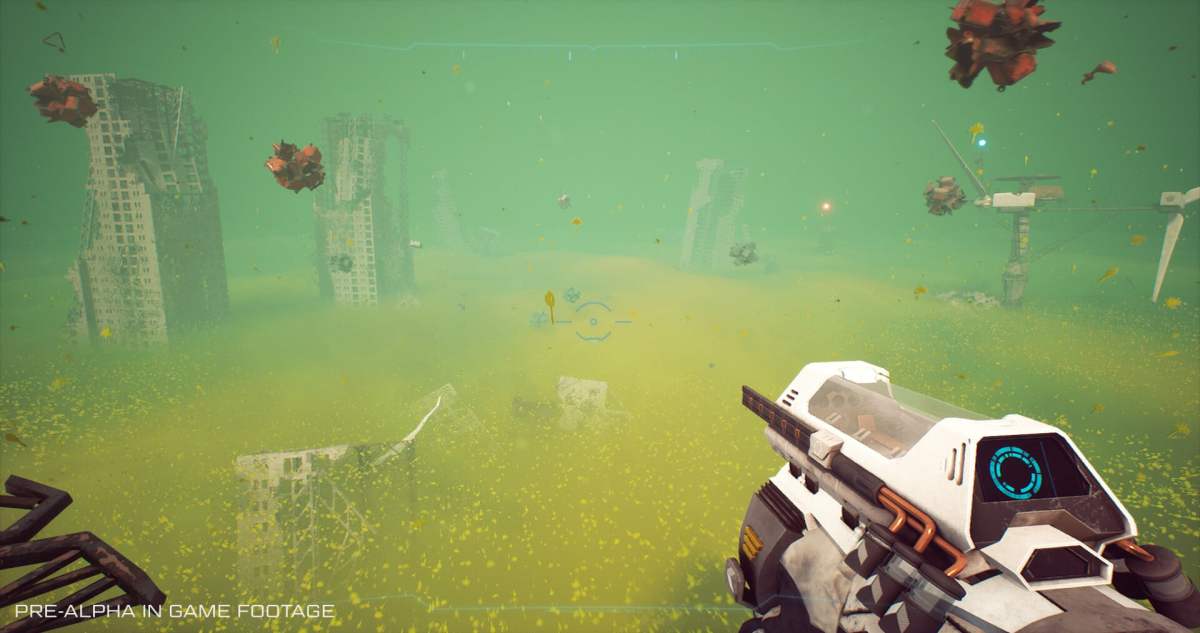
Forever Skies looks like it could be the kind of survival game fans of the genre have longed for. What is Far From Home doing to differentiate this project from other similar titles?
Tomasz Wlazlo: Probably the biggest advance would be the airship, which I’ve just described. The second big advancement which I really love is the fact that Forever Skies actually consists of two games blended into one. But that’s not all, as we introduced a health system where immunity and even your diet can have a significant impact on the player. You can and will get sick, and you will need science to get back on your feet.
This system is based on various pathogens and conditions you will deal with. Players will be able to hunt down, catch, and study different viruses. Then they will be able to discover some ways to cure it and use the viruses in other ways, from boosting your health to using them against hostile life forms. I think this is quite unique. After all, our protagonist is a scientist who uses research and tech tools in order to solve problems the game will throw at him. Think of him as the astronaut from The Martian, a great movie that inspired our vision.
Gray backdrops and dull environments often hold post-apocalyptic games back. How has Far From Home built Forever Skies to be visually unique?
Tomasz Wlazlo: We are giving gamers two parallel realms: a vast endless horizon, a destroyed post-human world which has no future and comprises just ruins and debris, and then a mysterious, almost alien, vibrant, and dangerous world under the dust. The former environment is all about tech, while the latter is thriving with new life forms. Players will be only able to descend into the dust once they find surface lifts.
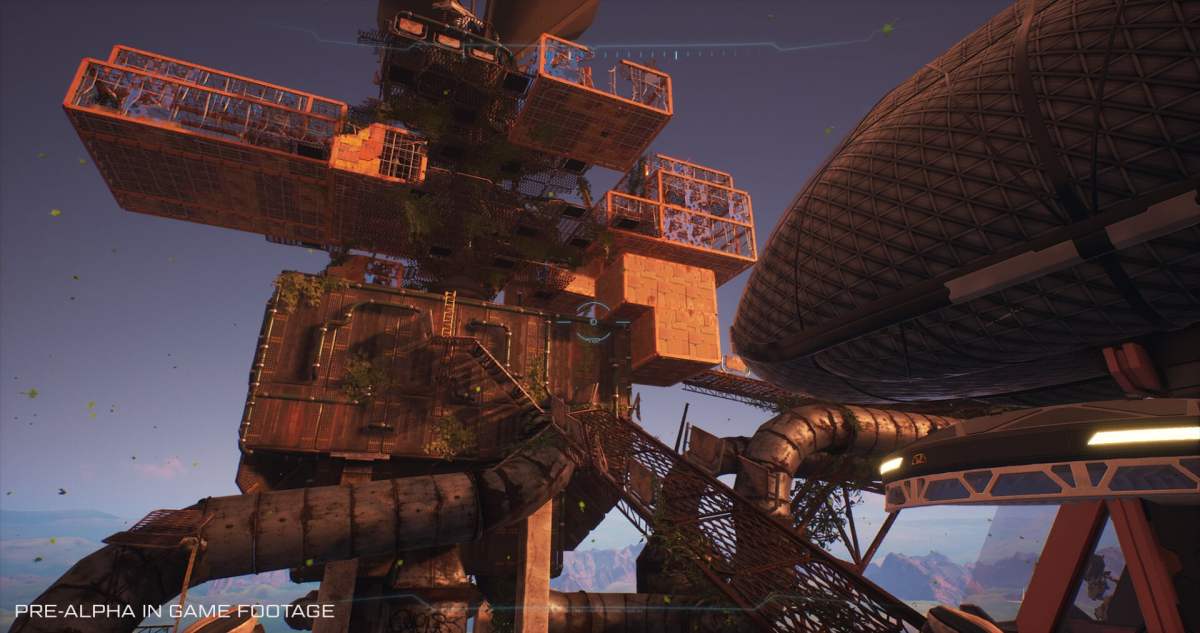
Branching off from that last question, it sounds like the game has multiple biomes to explore. Can you share how these diverse environments will change up the gameplay as we discover them?
Tomasz Wlazlo: In fact, there are different ways of exploring the biomes, as well as distinctive resources tied only to each of them. There are also separate threats in these contexts, even though some may look similar, e.g., risks of being infected. Each disease will require research and coming up with appropriate treatment, but those threats will differ depending on where the player will be. In particular, the deeper and further the player will have ventured, the more dangerous diseases they will face, but also, the more rare and uncommon blueprints they may find.
In terms of gameplay, I can say that the world above is more about the ship, exploration, and resource management, so it’s relatively relaxed, while the one below is tense, involving first-person combat and racing against time due to the limited oxygen needed to breathe within the layer of dust.
At its core, Forever Skies is a survival game, but it has a story too. Is the game’s narrative an unmissable component? Or is it something players can ignore if they’d like?
Tomasz Wlazlo: As the story centers on possible long-term consequences of environmental disaster, we actually work very hard for it to not be ignored. But in terms of balancing interactivity and storytelling, we absolutely give priority to gameplay. It needs to be as close to perfect as we’re capable of. In this, we plan to work with our community by implementing their feedback on an ongoing basis. Early Access on Steam is a perfect platform for such collaboration.
Narrative, which I said comes second, isn’t by any means inferior. We’re crafting a remarkable storyline which will paint a meaningful background and build strong motivation for players’ actions, taking them through twists and turns. The main plot will be laid out clearly and coherently throughout the game, with multiple side clues and scattered information to be found outside of the main path.
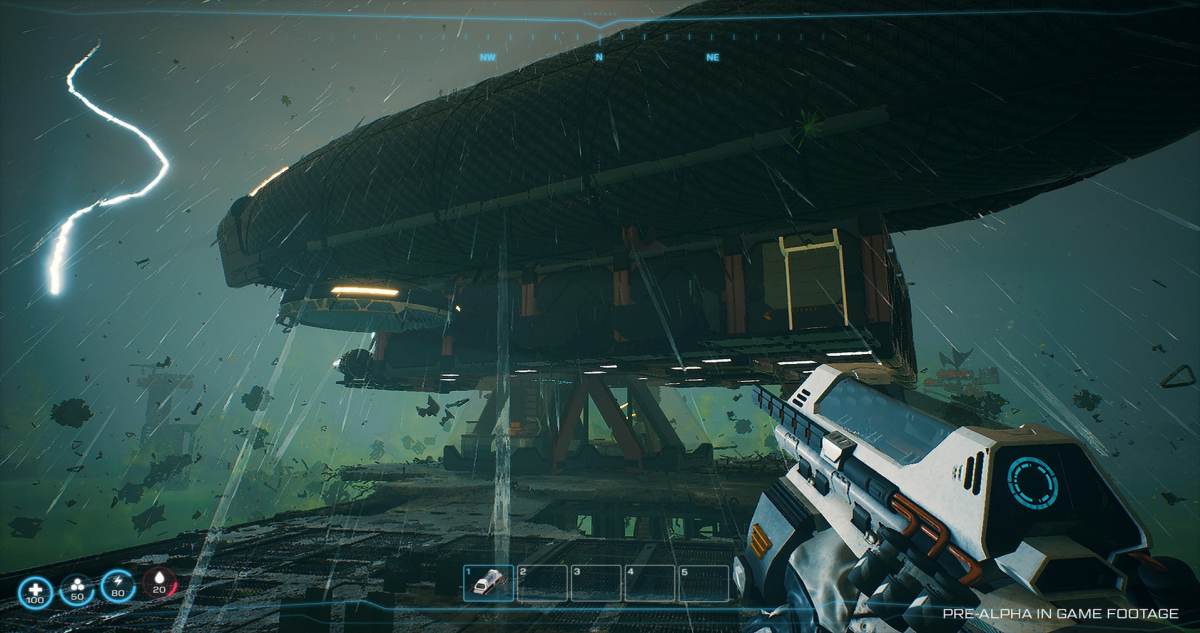
It sounds like co-op will arrive a few months after launch. How is the team approaching building co-op?
Tomasz Wlazlo: Co-op has been planned from the very beginning of the design phase. All of the game’s mechanics and the gameplay loop are natively prepared to have a group of people playing. This will actually be very fun to, for example, mutually approach the volume of tasks and problems needed to be resolved to build the airship. Think of assigning roles per the players’ skills and talents, from collecting resources, manufacturing, doing scientific research, and gardening, to even good old cooking for the team. I don’t want to say too much now, but I’m sure it will be challenging and fun.
Are there other post-launch plans that you’d be willing to share?
Tomasz Wlazlo: There is certainly a solid plan for a 4-player co-op mode. Other big plans for post-launch support include adding new content and, of course, balancing and fixing any issues that will pop up. Among new content, we plan new devices, biomes, objects to build, and new resources and customization options for airships.
In the actual schedule and creative priorities, we are going to foremost listen to our community. Forever Skies is a game for their entertainment. While working on a few previous titles we have learned that the post-launch support is not just the fixes but also communication with the community of players — a good example is the support of Dying Light. Our intention is to keep the dialogue open and to be able to respond to players’ feedback and needs.
Much of the team has experience in AAA game development. How does work on Forever Skies compare to some of those big-budget titles the team has helped create in the past?
Tomasz Wlazlo: Indeed, we grew up in AAA environments and standards, and dare I say it gives edge in creating “premium indie” games. Our know-how both on the engine side and gameplay side can accelerate processes and reduce redundancies. It also helps having a flat structure, where responsibility spreads across the whole team. Developers, programmers, and artists are personally involved and responsible for all elements of the game. Being in charge makes it all different.
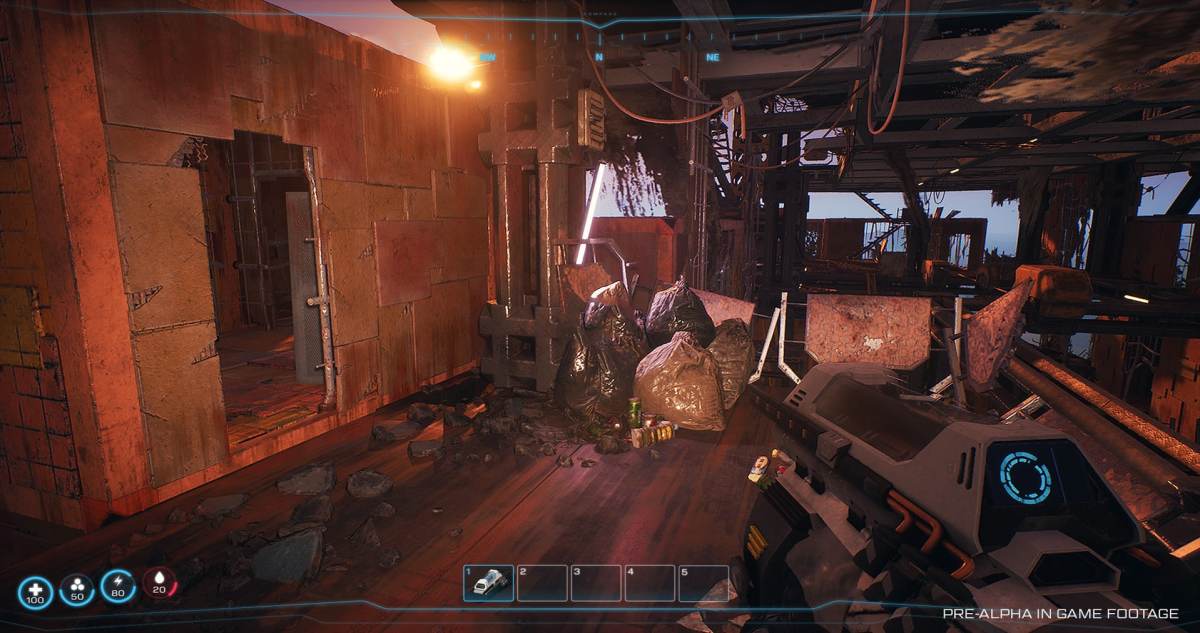
How is Far From Home utilizing the full power of the PlayStation 5 and Xbox Series X | S?
Tomasz Wlazlo: Among others, haptic feedback and adaptive triggers are implemented for immersion. We also extensively rely on the quick-load feature for a seamless experience, especially when switching between the two realms I spoke about. Also on a general level, the power of the current generation allows us to deliver high fidelity and seamless gameplay without compromising on quality. Please keep in mind this is still in the making, and we’ll be able to share more definitive details as we’ve passed the planned milestones related to the PC build where design is the main focus.
Would you consider Forever Skies to be a difficult game? Or will there be difficulty options for those who maybe want less (or more) challenge?
Tomasz Wlazlo: It will certainly be challenging, as it’s far from a button-masher. The main game loop will not only throw at players quite a few tasks and systems to manage at the same time but will also make you stop and think how to best go about things. Life is not easy in the post-apocalyptic future; surviving with just enough food and staying healthy while exploring the toxic world of Forever Skies is difficult. I can only confirm that we’ll offer difficulty levels to make sure players with different skill sets will be able to enjoy the game and make progress from where they will have stood.
Is there anything else you’d like to add about Far From Home, Forever Skies, survival games, or anything like that?
Tomasz Wlazlo: Let me take this opportunity to place our sincere thanks with gamers who interact with us on various platforms, i.e., Forever Skies’ Discord. Your reactions, feedback, and involvement in our game has been second to none. This gives us the power to keep going above and beyond to deliver a remarkable game, which will hopefully stay with all of you for a long time.
Forever Skies is currently scheduled to launch in early access on PC in 2022, with PlayStation 5 and Xbox Series X | S versions set to arrive sometime after.
This interview about Forever Skies has been edited for clarity and brevity.
